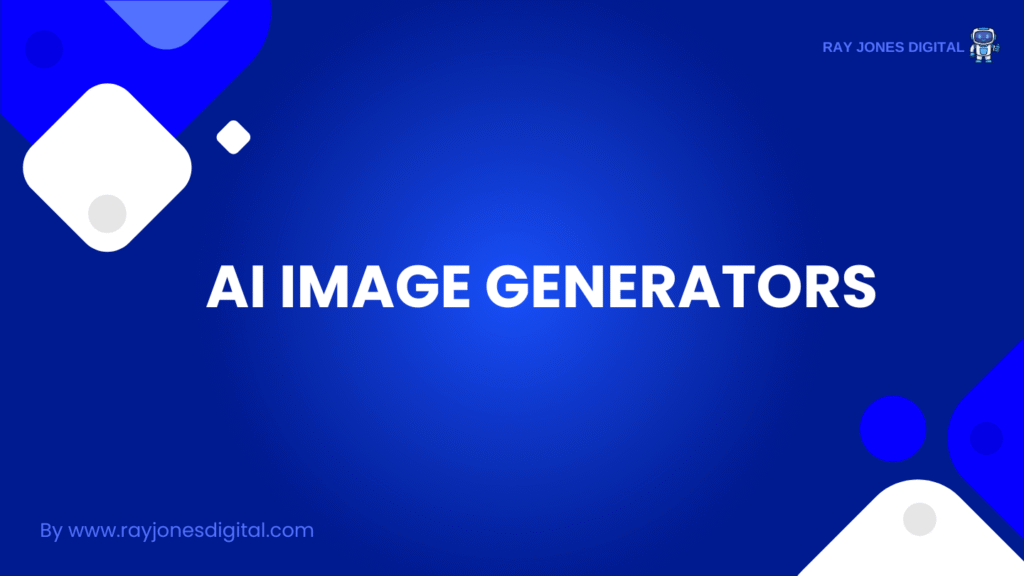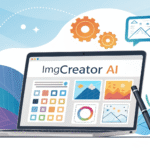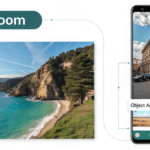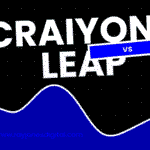
Creating professional-quality images has never been more accessible. AI image generators are revolutionising the design landscape, enabling anyone to produce stunning visuals in minutes rather than hours. These powerful tools are transforming everything from social media marketing to architectural visualisation.
This comprehensive guide explores the leading AI image generators available today, their unique capabilities, and practical applications across industries. Whether you’re a designer, marketer, content creator, or entrepreneur, understanding these tools will dramatically enhance your creative workflow and productivity.
Understanding AI Image Generation Technology
AI image generators use advanced machine learning models to create images from text descriptions. These systems have been trained on millions of images and their corresponding descriptions, enabling them to understand the relationship between words and visual concepts.
The technology works by processing your text prompt through neural networks that translate language into visual elements. These models can understand artistic styles, lighting conditions, composition principles, and even abstract concepts like emotions or atmospheres.
Modern AI image generators can produce photorealistic images, artistic illustrations, technical diagrams, and everything in between. They’ve evolved from producing blurry, abstract images to creating content that rivals professional photography and artwork.
The key advantage lies in speed and accessibility. Tasks that previously required hours of design work or expensive stock photo subscriptions can now be completed in minutes with a well-crafted prompt.
Leading AI Image Generators for 2026
DALL-E 3
OpenAI’s DALL-E 3 represents the current pinnacle of AI image generation technology. The platform excels at understanding complex prompts and producing images that closely match user intentions.
DALL-E 3’s strength lies in its ability to handle detailed descriptions and maintain consistency across multiple generations. The system can create images in various styles, from photorealistic portraits to abstract art, whilst maintaining impressive quality standards.
The platform integrates seamlessly with ChatGPT, allowing users to refine their prompts through conversation. This iterative approach makes it easier to achieve desired results without extensive prompt engineering knowledge.
However, DALL-E 3 operates on a credit system, making it more expensive for high-volume use. The platform also maintains strict content policies, which may limit certain creative applications.
Midjourney
Midjourney has built a reputation for producing aesthetically stunning images with a distinctive artistic flair. The platform particularly excels at creating images with rich textures, dramatic lighting, and cinematic compositions.
The Discord-based interface might seem unusual, but it facilitates community interaction and learning. Users can observe others’ prompts and techniques, accelerating their learning curve.
Midjourney’s strength lies in artistic interpretation rather than literal accuracy. It often produces images that are more visually striking than the original prompt might suggest, making it ideal for creative projects requiring visual impact.
The platform’s subscription model provides predictable costs for regular users, though the Discord interface may not suit all workflows.
Stable Diffusion
Stable Diffusion stands out as the most customisable AI image generator available. Its open-source nature allows developers to modify the model, create specialised versions, and integrate it into custom applications.
The platform offers multiple interfaces, from simple web applications to advanced desktop software. This flexibility makes it suitable for both casual users and professionals requiring specific features.
Stable Diffusion’s ability to run locally provides privacy advantages and unlimited generation capabilities. Users can create custom models trained on specific styles or subjects, offering unprecedented control over output.
The learning curve is steeper than other platforms, but the investment pays off through greater creative control and lower long-term costs.
Adobe Firefly
Adobe’s entry into AI image generation focuses on commercial safety and professional integration. Firefly has been trained exclusively on Adobe Stock images and public domain content, reducing copyright concerns.
The platform integrates seamlessly with Adobe Creative Suite, allowing designers to incorporate AI-generated elements into existing workflows. This integration provides significant advantages for professionals already using Adobe tools.
Firefly excels at creating images that match specific brand guidelines and style requirements. The platform’s commercial focus means it’s designed for business use cases rather than experimental art.
The subscription model aligns with Adobe’s existing pricing structure, making it cost-effective for Creative Cloud subscribers.
Canva AI
Canva’s AI image generator emphasises ease of use and practical applications. The platform excels at creating images that work well within Canva’s design templates and marketing materials.
The tool’s strength lies in its understanding of design principles and marketing contexts. It can create images that complement text layouts and branding elements effectively.
Canva AI’s integration with the broader Canva ecosystem makes it particularly valuable for social media managers and small business owners who need quick, professional-looking content.
The platform’s free tier provides substantial value, though advanced features require a subscription.
Choosing the Right AI Image Generator
Selecting the best AI image generator depends on your specific needs, budget, and technical requirements. Consider these factors when making your decision:
Quality requirements vary significantly between applications. Social media posts might not need the same fidelity as print advertisements or architectural visualisations. Test each platform with your typical use cases to assess quality standards.
Style preferences play a crucial role in selection. Some generators excel at photorealism, whilst others produce more artistic or stylised results. Review each platform’s gallery to understand their aesthetic tendencies.
Volume needs significantly impact cost considerations. High-volume users might benefit from platforms offering unlimited generation, whilst occasional users might prefer pay-per-use models.
Integration requirements matter for professional workflows. Consider how each platform connects with your existing tools and processes.
Commercial usage rights vary between platforms. Some generators restrict commercial use of free accounts, whilst others provide full commercial rights regardless of subscription level.
Practical Applications Across Industries
Marketing and Advertising
AI image generators are transforming marketing by enabling rapid content creation and A/B testing. Marketers can generate multiple variations of campaign visuals to test audience preferences without expensive photo shoots.
Social media managers benefit from the ability to create consistent, branded content quickly. The technology enables small businesses to produce professional-looking marketing materials without significant design budgets.
Product visualisation has been revolutionised by AI image generators. Companies can create lifestyle images showing products in various contexts without elaborate staging.
E-commerce
Online retailers use AI image generators to create product lifestyle images, enhance existing photos, and generate content for different market segments. The technology enables rapid localisation of marketing materials for global audiences.
Fashion retailers can showcase clothing in various settings and on different body types without extensive photography sessions. This capability reduces costs whilst improving customer experience.
Content Creation
Bloggers and content creators use AI image generators to create custom illustrations, header images, and social media graphics. The technology eliminates reliance on stock photography whilst ensuring unique, relevant visuals.
YouTube creators benefit from the ability to generate custom thumbnails and channel art that stands out in crowded markets. The speed of generation enables rapid iteration and testing.
Architecture and Design
Architects and interior designers use AI image generators for concept visualisation and client presentations. The technology enables rapid exploration of design ideas before committing to detailed drawings.
Real estate professionals can create aspirational images showing properties in different seasons or with various styling options. This capability enhances marketing materials and client presentations.
Optimising Your AI Image Generation Workflow
Crafting Effective Prompts
Successful AI image generation relies heavily on prompt crafting skills. Effective prompts balance specificity with creative freedom, providing enough detail to guide the AI whilst leaving room for interpretation.
Start with clear descriptions of the main subject, then add details about style, lighting, composition, and mood. Use specific artistic terms and reference well-known styles or artists to achieve desired aesthetics.
Experiment with prompt length and structure. Some generators respond better to concise descriptions, whilst others benefit from detailed instructions. Learn each platform’s preferred prompt format through experimentation.
Iterative Refinement
AI image generation is rarely perfect on the first attempt. Develop a workflow that embraces iteration and refinement. Start with basic prompts, then gradually add specificity based on initial results.
Use variation features to explore different interpretations of successful prompts. This approach often reveals unexpected creative directions and helps overcome creative blocks.
Quality Control
Implement quality control processes to ensure generated images meet your standards. This includes checking for common AI artifacts, ensuring brand consistency, and verifying commercial usage rights.
Maintain a library of successful prompts and techniques for future reference. This resource becomes invaluable for maintaining consistency across projects and team members.
Cost-Benefit Analysis
Time Savings
AI image generators can reduce design time from hours to minutes. A custom illustration that might take a designer several hours can be generated in seconds, though refinement might require additional time.
The time savings multiply when creating multiple variations or testing different concepts. Traditional design processes requiring multiple rounds of revisions can be accelerated dramatically.
Cost Considerations
Initial subscription costs for AI image generators are typically lower than hiring professional designers or purchasing extensive stock photo libraries. However, high-volume usage can become expensive on credit-based systems.
Consider the total cost of ownership, including subscription fees, time investment in learning, and potential additional software requirements. Compare this against traditional design costs and stock photography expenses.
Quality Trade-offs
AI-generated images may lack the nuanced understanding and creative problem-solving abilities of human designers. Complex branding requirements or highly specific technical illustrations might still require human expertise.
The technology excels at rapid prototyping and concept development but may need human refinement for final production use.
Ethical Considerations and Best Practices
Copyright and Intellectual Property
AI image generators raise complex questions about intellectual property and copyright. Most platforms provide commercial usage rights for generated images, but understanding the specific terms is crucial.
Be aware of potential copyright issues when generating images of recognisable people, brands, or copyrighted characters. Most platforms have policies preventing such use, but enforcement varies.
Attribution and Transparency
Consider whether to disclose AI generation in your work. Some industries and contexts require transparency about AI usage, whilst others leave the decision to individual creators.
Develop internal policies about AI usage disclosure, particularly if you’re creating content for clients or commercial purposes.
Bias and Representation
AI image generators can perpetuate biases present in their training data. Be mindful of representation issues and actively work to create diverse, inclusive content.
Review generated images for unintended biases and adjust prompts accordingly. This is particularly important for marketing materials and public-facing content.
Future Developments and Trends
Integration with Design Tools
The future of AI image generation lies in seamless integration with existing design workflows. Expect to see AI capabilities built directly into popular design software, making the technology even more accessible.
Real-time collaboration features will enable teams to work together on AI-generated content, sharing prompts and refining results collectively.
Improved Quality and Control
Future developments will focus on providing users with greater control over generated images. This includes better style consistency, improved handling of specific requests, and more predictable results.
Video generation capabilities are expanding rapidly, with AI tools beginning to create short clips and animations from text descriptions.
Personalisation and Training
Custom model training will become more accessible, allowing users to create AI generators tailored to specific styles, brands, or use cases. This personalisation will enable more consistent and relevant results.
The technology will become better at understanding individual preferences and artistic styles, creating more personalised generation experiences.

I am Ray Jones Digital
My current occupations: a Digital Marketer, Local SEO expert, Link Builder, and WordPress SEO specialist. Shopify SEO, Ecommerce Store Management, and HTML & WordPress Developer I have been practicing the above mentioned services for more than 10 years now As an SEO expert working with your ongoing projects.



